
Basic_Electrical_Engineering_4th_edition
.pdf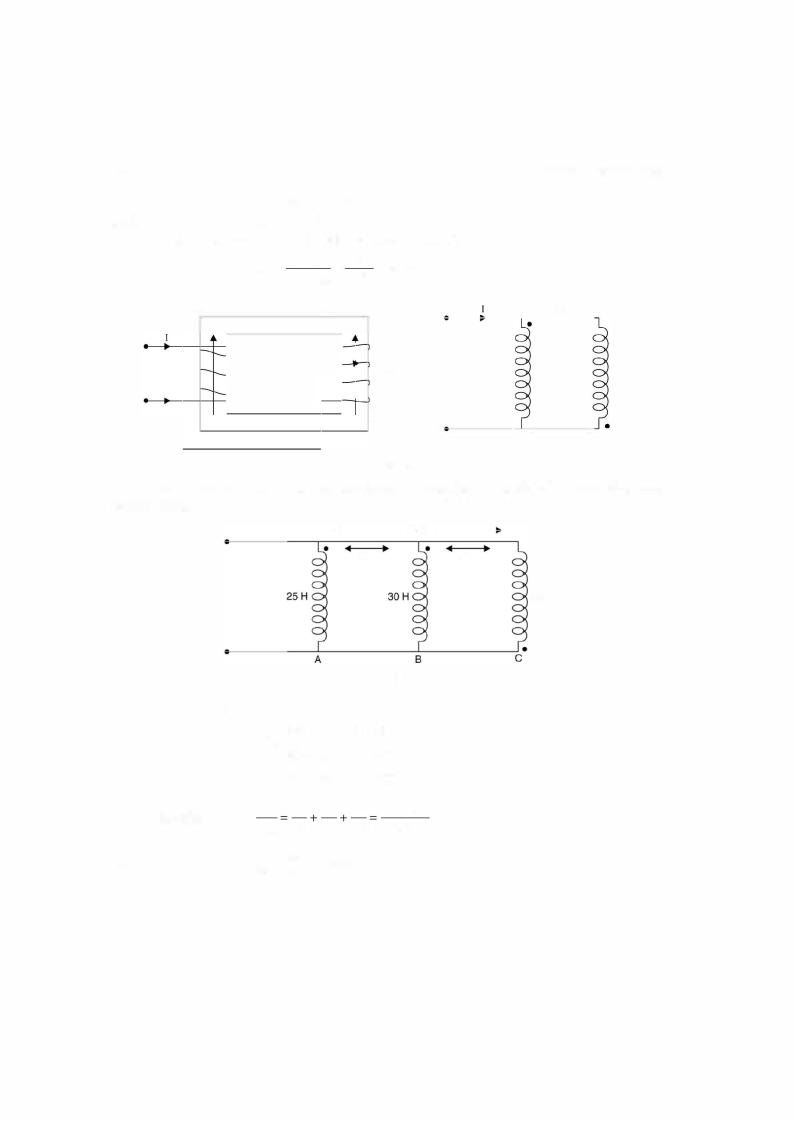
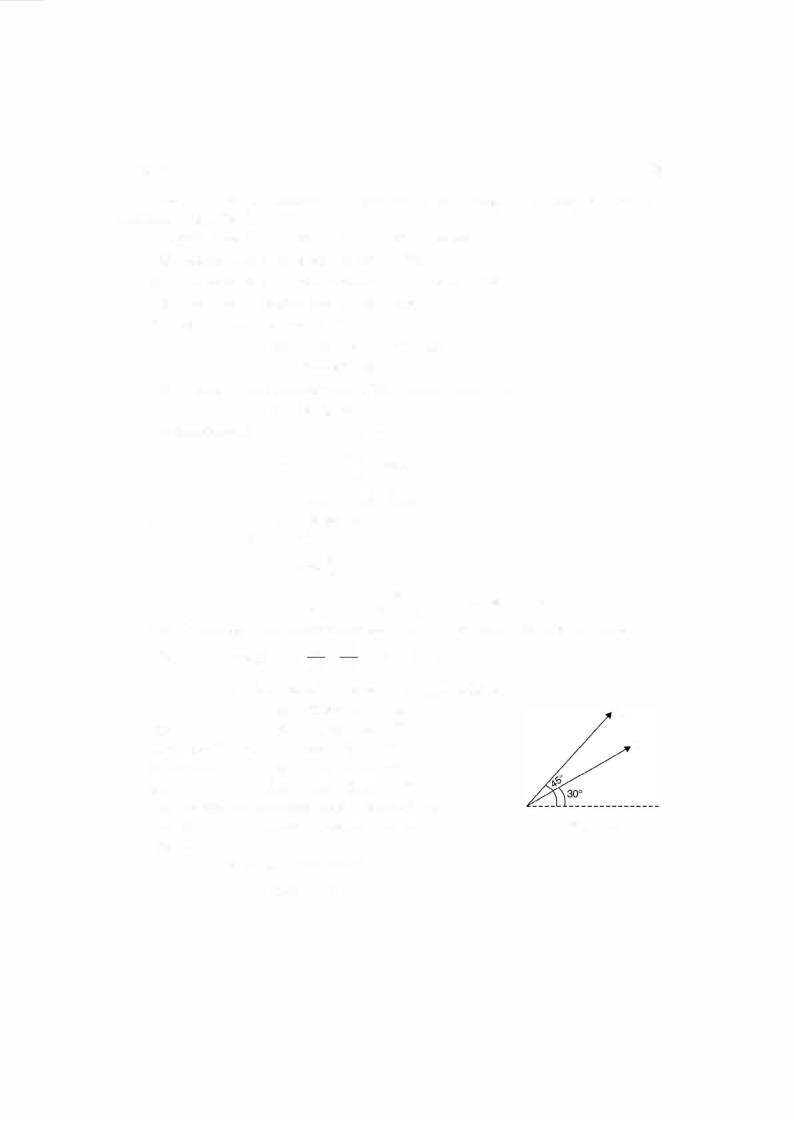
A-C CIRCUITS |
1 05 |
Example 1.29. A sinusoidally varying alternating current of frequency 50 Hz has a maximum value of 20 A.
(i)Write down the equation for the instantaneous value.
(ii)Determine the value of current after 1I100 sec.
(iii)Determine the time taken to reach 10 A for the first time.
(iv)Determine the average and the rms value.
Solution: The general expression is
i(t) = Im sin mt where OJ = 2nf
=2n x 50 = 314
(i)Hence the instantaneous value of the current is given as
|
|
|
|
i(t)t = |
20 sin 314t |
|
|
|
|
|
|
|||||||||
(ii) |
Substituting |
|
1/100 we have |
|
|
|
||||||||||||||
|
|
|
|
"( ) |
|
= |
|
. |
|
3 14 |
|
|
|
. |
|
|
||||
|
|
|
|
|
20 sm - - |
|
20 sm 3 . 14 |
|||||||||||||
|
|
|
|
i t |
|
= |
|
|
|
1 00 = |
|
|
|
|
|
|||||
|
|
|
|
|
|
|
= |
20 sin |
|
|
|
|
0. |
|
|
Ans. |
|
|
||
(iii) |
|
|
|
|
10 |
20 sin 314t |
|
|
|
|
|
|
||||||||
or |
|
sin 314t |
0.5 |
1t |
|
r e = |
|
|
|
|
|
|
|
|||||||
|
|
|
|
|
|
|
== |
. |
|
|
|
|
|
|
|
|
|
|
|
|
|
|
|
|
|
|
|
|
Sln - |
|
|
|
|
|
|
|
|
|
|
|
|
|
|
|
|
|
|
|
|
n |
6 |
|
|
|
|
|
|
|
1t |
|
|
|
or |
|
|
3 14t = |
or |
|
t = |
|
|
|
= |
0.00166 sec. Ans. |
|||||||||
|
|
|
|
|
|
|
= |
6 |
|
|
|
314 x 6 |
|
|||||||
(iv) |
The average value of this sinusoidal wave over complete cycle is zero. Ans. |
|||||||||||||||||||
|
. |
|
|
|
|
as |
I |
|
20 |
|
|
|
14. 14 |
A |
|
Ans. |
||||
The rms va1ue is given. |
m |
|
J2 |
|
|
|
|
|
. |
|
||||||||||
|
|
|
|
|
|
|
|
J2 |
|
|
|
|
|
|
|
|
||||
Example 1.30. |
|
|
alternating currents are represented by |
|||||||||||||||||
|
|
Two |
|
|
|
= |
|
= |
|
|
|
= |
|
|
|
|
|
|
||
|
|
|
iz(t) |
20 sin (314t + 30°) |
|
I2 |
||||||||||||||
and |
|
iit) |
40 sin (314t |
|
|
45°) |
|
|
||||||||||||
Determine the resultant current i(t) = i/t) + iit). |
I, |
|||||||||||||||||||
Solution: |
|
i1 |
(t) |
= |
20 sin (314t + 30°) |
|
|
|||||||||||||
|
|
|
|
|
|
|
|
|
|
|
|
+ |
|
|
|
|
||||
and |
|
|
i2(t) |
= 40 sin (314t + 45°) |
|
|
||||||||||||||
The two phasors are represented as shown here.
Resolving the two currents along x and y-axes. |
Fig. E1 .30 |
|||||
|
||||||
We have |
|
|
|
|
|
|
20 cos 30° |
|
j20 sin 30° |
|
|||
|
10.J3 |
+ |
jlO |
|
||
= |
|
+ |
|
|
|
|
|
|
|
|
|
|
|
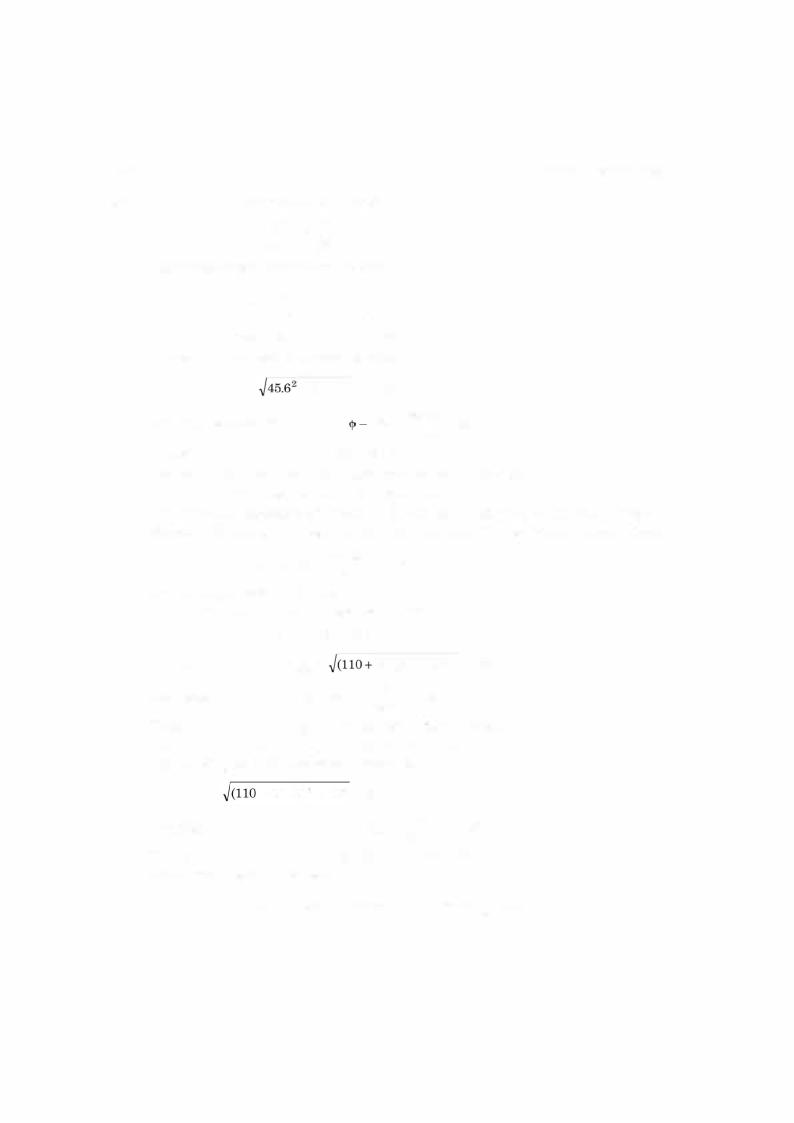
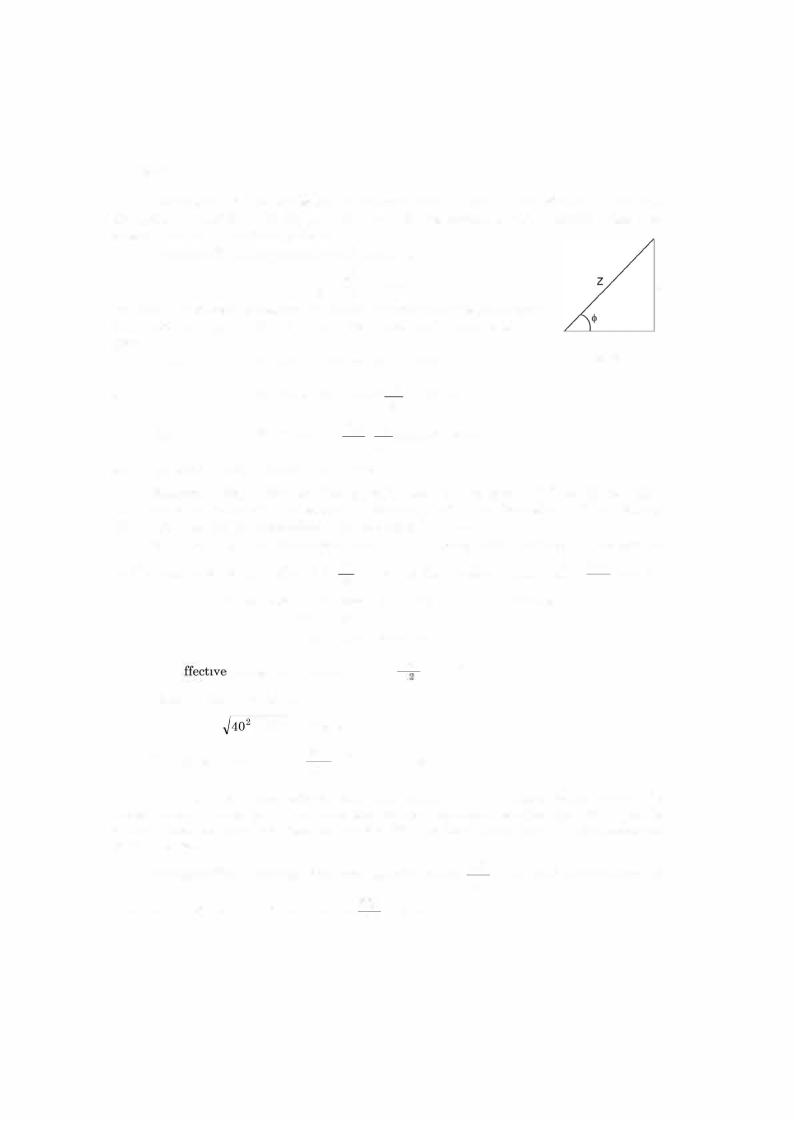
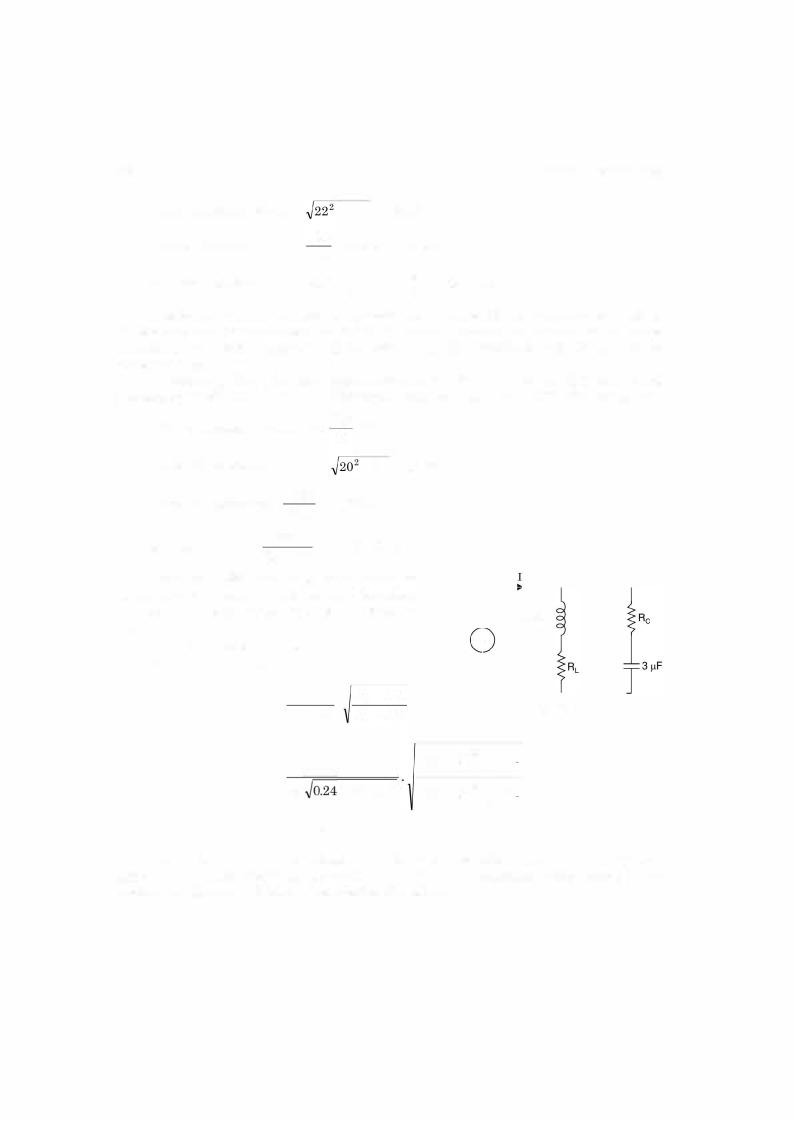
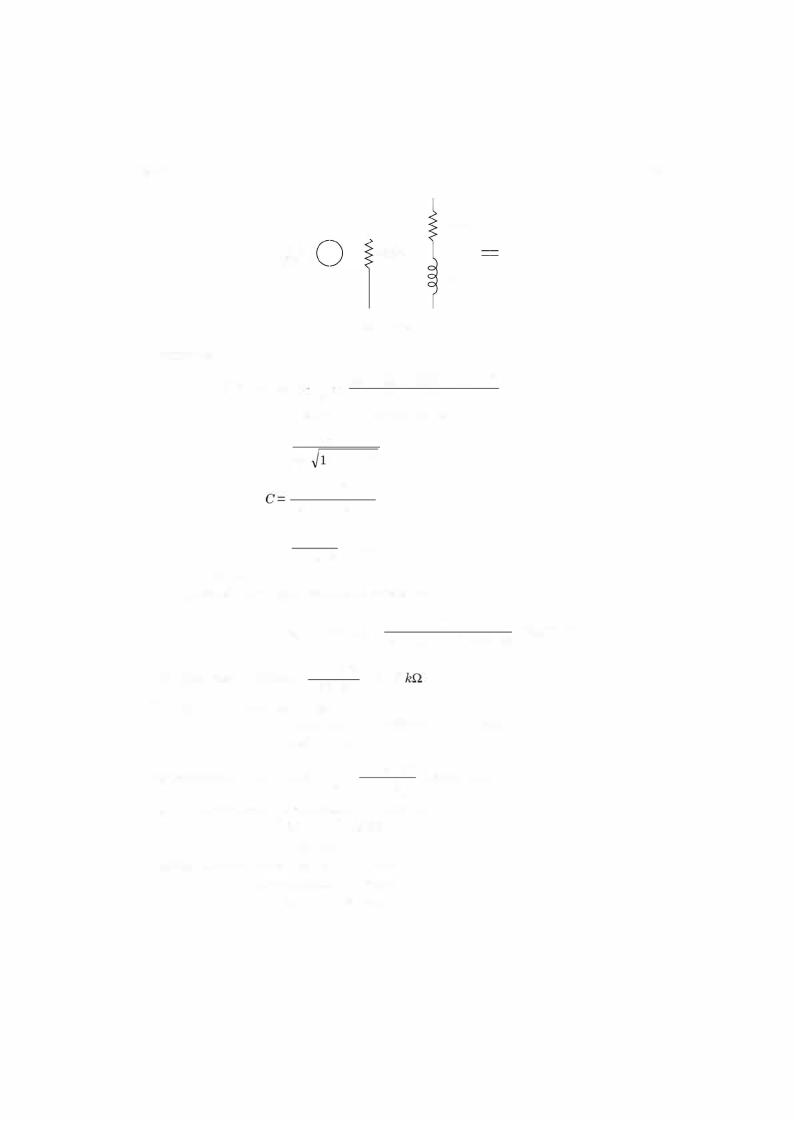



1 1 2 |
ELECTRICAL ENGINEERING |
The voltage across the source is
iR = 2 x 1000 = 2000 volts v(t) = 2000 sin 50 t
The current through the inductor
2000 |
= -j40 |
j x 50 x 1 |
= 40 cos (50t - 90°) = 40 sin 50t
Current through capacitor
. v(t) ic(t) = 11Jffio. C
=j 2000 x 50 x 10-6 x 400
=j40 A = 40 cos (50t + 90°)
=- 40 sin 50t Ans.
Example 1.40. Fig. 1.40 represents the magnetic circuit ofan attracted armature relay. The coil has 500 turns and the mean core length is 400 mm when the air gap lengths are 1.0 mm each a flux density of 0.8 Tesla is required to actuate the relay. The magnetic field intensity is 500 AT!m for the material at the given flux density. Determine (i) the current required to operate the relay (ii) the permeability and µr of the core and (iii) the current required if the gap is zero.
Solution. Since the air gap is small flux fringing can be neglected. Hence the flux density is same in both the core the air gap.
The mmf required for the core is 500 x 0.4 = 200 AT
|
= 2 x 1 x 10-3 x |
0.8 |
||
mmf for the air gap |
4n x 10-' |
|||
|
= 2 x 104 x 0.8 |
= 1273 AT |
||
Hence total mmf required |
= 1273 |
|
47t |
|
|
|
+ |
- |
1473 |
(i) Since the number of turns is 500, the current required to operate the relay is
1473500 = 2.95 A
Fig. E1 .40

